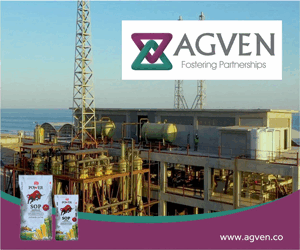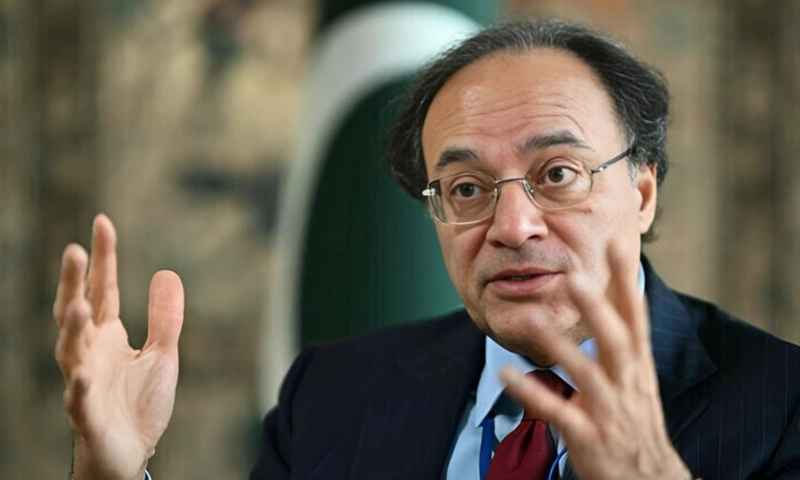- Web Desk
- 1 Hour ago

SOEs aggregate losses decrease by 14.03pc as government support tops Rs1.5 trillion
-
- Web Desk Karachi
- Feb 20, 2025

ISLAMABAD: The aggregate losses reported by loss-making State-Owned Enterprises (SOEs) amounted to Rs851 billion for the fiscal year ending June 2024, marking a 14.03 percent decline compared to the previous year.
This information comes from the Aggregate Annual Report on SOEs, covering the period from July 2023 to June 2024, which was released by the Finance Division on Wednesday.
According to the report, these SOEs contributed Rs372 billion in tax revenue, while non-tax revenues, which include sales taxes, royalties, and levies, totalled Rs1,400 billion.
Additionally, dividends were recorded at Rs82 billion, with interest payments reaching Rs206 billion.
Collectively, the contributions from these enterprises amounted to Rs2,062 billion. The gross revenue generated by federal SOEs increased by 5.2 percent year-on-year, reaching Rs13,524 billion. While total aggregate profits rose by 14.61 percent year-on-year to Rs820 billion, the loss-making SOEs still reported significant aggregate losses of Rs851 billion, reflecting a 14.03 percent decrease YoY for the 12 months concluding in June 2024.
Notably, these losses were offset by government assistance, which included Rs782 billion in subsidies and Rs367 billion in grants counted as revenue. After eliminating the Public Sector Enterprises (PSWF) entities, the net aggregate losses—after accounting for profits from the profit-making entities—stood at Rs521.5 billion.
The report identified the major loss-making SOEs and the scale of their financial losses.
The National Highway Authority (NHA) reported the highest loss of Rs295.5 billion, followed by QESCO, which lost Rs120.4 billion, and PESCO with losses of Rs88.7 billion.
Other significant losses were recorded by Pakistan International Airlines (PIA) at Rs73.5 billion, Pakistan Railways with Rs51.3 billion, SEPCO at Rs37 billion, and LESCO with Rs34.5 billion.
Pakistan Steel Mills Corporation incurred losses of Rs31.1 billion, HESCO reported Rs22.1 billion, GENCO-II Rs17.6 billion, and IESCO Rs15.8 billion.
Govt initiates process to close over 30 state-owned entities
The Pakistan Post Office lost Rs13.4 billion, TESCO Rs9.5 billion, GEPCO Rs8.5 billion, and GENCO-III reported Rs7.8 billion, with all other entities combined incurring losses of Rs23.7 billion.
Cumulatively, the accumulated losses of these SOEs now total an astonishing Rs5,748 billion, with most occurring over the past decade.
Conversely, the report highlighted the top 15 profit-generating SOEs, with Oil and Gas Development Company Limited (OGDCL) leading with a profit of Rs208.9 billion, followed by Pakistan Petroleum Limited with Rs115.4 billion in profits, and National Power Parks generating Rs76.8 billion.
Other profit-making entities included Government Holdings (Pvt) Limited with Rs69.1 billion, Pakistan Arab Refinery Company at Rs55 billion, Port Qasim Authority contributing Rs41 billion, and MEPCO with Rs31.8 billion.
The National Bank of Pakistan (NBP) reported Rs27.4 billion in profits, WAPDA Rs22.2 billion, KPT Rs20.3 billion, Pakistan National Shipping Corporation (PNSC) Rs20.1 billion, Pakistan State Oil (PSO) Rs19.6 billion, State Life Insurance Corporation Rs18.3 billion, and Pak Libya Holding Company (PKIC) with Rs15.2 billion.
However, despite recording these accounting profits, the entities still faced challenges such as low free cash flow and high Weighted Average Cost of Capital (WACC), which ranged between 17 percent and 22 percent.
The report further indicated that the book value of assets increased by 6.37 percent year-on-year, reaching Rs38,434 billion, while liabilities grew by 6.7 percent YoY, totalling Rs32,571 billion. This resulted in a net equity increase of 4.47 percent YoY, coming to Rs5,863 billion.
The observed low free cash flow and a high WACC contributed to a Return on Equity (ROE) of -0.5 percent and a Return on Invested Capital (ROIC) of 3.4 percent.
To compensate for these losses, the Government of Pakistan extended fiscal support amounting to Rs1,586 billion based on IFRS compliant accrual accounting standards. This support consisted of Rs367 billion in grants, Rs782 billion in subsidies, Rs336 billion in loans, and Rs99 billion in equity injections. This aid represented 13 percent of the federal budget’s receipts.
However, the Central Management Unit (CMU) has noted discrepancies between cash and accrual basis amounts, leading to inaccuracies in the balance sheets of SOEs.
There is a pressing need for reconciliation in areas where governmental support is still pending, to either clear or remove from their receivables. The loans granted by the Government of Pakistan to SOEs comprise Rs1,767 billion in Cash Development Loans (CDLs) and Rs1,747 billion in Foreign Relend Loans (FRLs).
Additionally, SOEs bear a debt of Rs2,813 billion from private sector banks and bonds/Sukuks, alongside Rs553 billion in other interest-bearing liabilities, such as leases. The total rollover costs and accrued interest on these loans are estimated at Rs2,333 billion, bringing the total outstanding loans, including accrued interest, to Rs9,195 billion.
The financial profile of the SOE portfolio indicates significant risks, with a financial leverage ratio of 6.62x and an operating leverage of 10.6x, mainly due to substantial fixed costs.
This leads to an overall leverage ratio of approximately 70.12x, rendering the portfolio particularly vulnerable to economic fluctuations. The Value at Risk (VaR) for the Government of Pakistan’s SOE portfolio is assessed at Rs4,951 billion with a 95 percent confidence interval, highlighting the considerable risk exposure involved.
Moreover, the credit spread on SOE debt is reported at 226 basis points over the risk-free rate, indicating elevated borrowing costs as per structural modelling. The portfolio exhibits an annualised volatility of 7.9 percent, and the Altman Z-score stands at 0.29, pointing to substantial financial distress within the portfolio.






